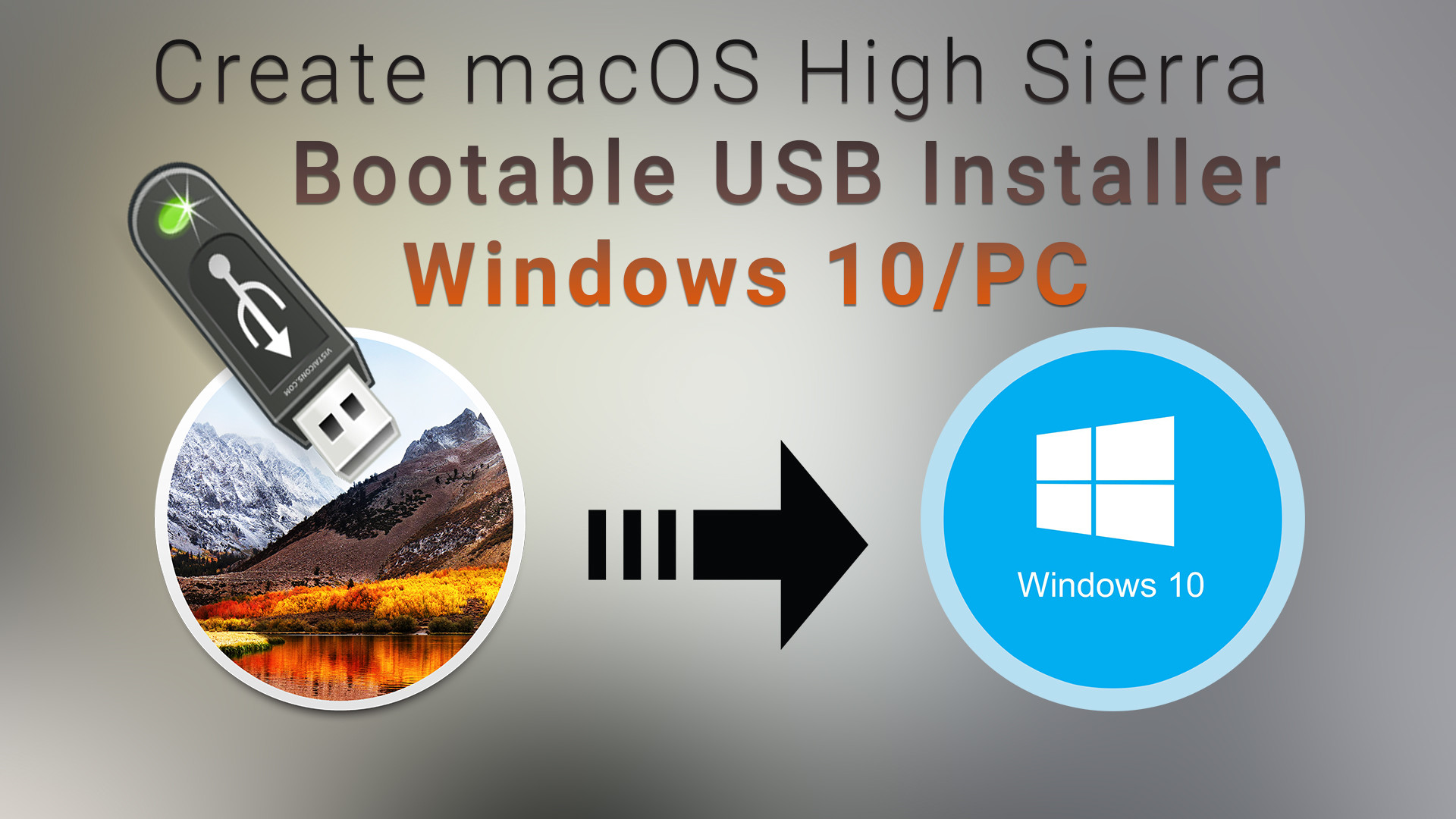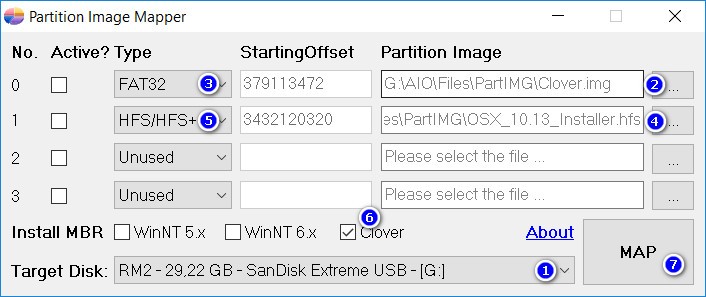These advanced steps are primarily for system administrators and others who are familiar with the command line. You don't need a bootable installer to upgrade macOS or reinstall macOS, but it can be useful when you want to install on multiple computers without downloading the installer each time.
Download macOS
Find the appropriate download link in the upgrade instructions for each macOS version:
See also: How to dual boot MacOS sierra and windows 10 in Hackintosh. Configuring Clover Bootloader. Clover Bootloader is the key to install macOS on PC. It fakes the macOS installer to think that it is going to install on a real Macintosh. Clover is already included in the above high sierra DMG file and is restored into the USB.
macOS Catalina, macOS Mojave, ormacOS High Sierra
Installers for each of these macOS versions download directly to your Applications folder as an app named Install macOS Catalina, Install macOS Mojave, or Install macOS High Sierra. If the installer opens after downloading, quit it without continuing installation. Important: To get the correct installer, download from a Mac that is using macOS Sierra 10.12.5 or later, or El Capitan 10.11.6. Enterprise administrators, please download from Apple, not a locally hosted software-update server.
OS X El Capitan
El Capitan downloads as a disk image. On a Mac that is compatible with El Capitan, open the disk image and run the installer within, named InstallMacOSX.pkg. It installs an app named Install OS X El Capitan into your Applications folder. You will create the bootable installer from this app, not from the disk image or .pkg installer.
Use the 'createinstallmedia' command in Terminal
- Connect the USB flash drive or other volume that you're using for the bootable installer. Make sure that it has at least 12GB of available storage and is formatted as Mac OS Extended.
- Open Terminal, which is in the Utilities folder of your Applications folder.
- Type or paste one of the following commands in Terminal. These assume that the installer is still in your Applications folder, and MyVolume is the name of the USB flash drive or other volume you're using. If it has a different name, replace
MyVolumein these commands with the name of your volume.
Catalina:*
Mojave:*
High Sierra:*
El Capitan: - Press Return after typing the command.
- When prompted, type your administrator password and press Return again. Terminal doesn't show any characters as you type your password.
- When prompted, type
Yto confirm that you want to erase the volume, then press Return. Terminal shows the progress as the bootable installer is created. - When Terminal says that it's done, the volume will have the same name as the installer you downloaded, such as Install macOS Catalina. You can now quit Terminal and eject the volume.
* If your Mac is using macOS Sierra or earlier, include the --applicationpath argument, similar to the way this argument is used in the command for El Capitan.
Use the bootable installer
After creating the bootable installer, follow these steps to use it:
- Plug the bootable installer into a compatible Mac.
- Use Startup Manager or Startup Disk preferences to select the bootable installer as the startup disk, then start up from it. Your Mac will start up to macOS Recovery.
Learn about selecting a startup disk, including what to do if your Mac doesn't start up from it. - Choose your language, if prompted.
- A bootable installer doesn't download macOS from the Internet, but it does require the Internet to get information specific to your Mac model, such as firmware updates. If you need to connect to a Wi-Fi network, use the Wi-Fi menu in the menu bar.
- Select Install macOS (or Install OS X) from the Utilities window, then click Continue and follow the onscreen instructions.
Learn more
For more information about the createinstallmedia command and the arguments that you can use with it, make sure that the macOS installer is in your Applications folder, then enter this path in Terminal:
Catalina:
Mojave:
High Sierra:
El Capitan:
Download now
[ Direct download link (MacOS) ]------
How to create a bootable macOS USB installer drive All macOS; has been made public on our website after successful testing. This tool will work great on MAC OS and WINDOWS OS platforms. And Latest mobile platforms
How to create a bootable macOS USB installer drive All macOS has based on open source technologies, our tool is secure and safe to use.

 This tool is made with proxy and VPN support, it will not leak your IP address, 100% anonymity, We can't guarantee that.
This tool is made with proxy and VPN support, it will not leak your IP address, 100% anonymity, We can't guarantee that. FREE SUPPORT. Look for contact us page.
Have a good one, cheers!
How to create a bootable installer for macOS. In this tutorial, I will show you how to create macOS High Sierra and Mac OS X Snow Leopard 10.6 DMG Mac bootable USB installer on windows without mac and transcmac.
You can create this USB on Windows 7/8/10.
Meny aaj us main btaya he k aap kiss traha sy macos ki usb bootable bna sgty ho.
Important Message for My youtube Subscriber’s |

All setup Download links.
Bootable Software link:
Mac OS X Snow Leopard link:
macOS 10.13.1 High Sierra
How to Use:
Open destination folder and locate file notes.txt, open it and read step by step.
Enjoy!
Bootable Installer Mac Os High Sierra
Don’t forget to read instructions after installation.
Enjoy How to create a bootable macOS USB installer drive All macOS. for MAC OS/X
Bootable Usb Installer For Macos High Sierra
All files are uploaded by users like you, we can’t guarantee that How to create a bootable macOS USB installer drive All macOS For mac are up to date.
We are not responsible for any illegal actions you do with theses files. Download and use How to create a bootable macOS USB installer drive All macOS Mac only on your own responsibility.